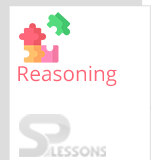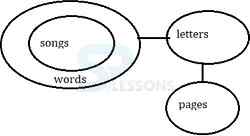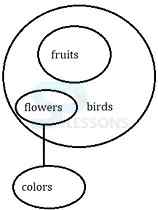 Introduction
Introduction
What is Reasoning Ability Test?
A logical reasoning test is a form of psychometric testing that is widely used by corporate employers to help assess candidates during their recruitment process. 'Psychometric' is just a fancy way of saying 'measuring mental ability' and logical reasoning tests are designed to measure your non-verbal skills.
The article SSC CPO Reasoning Ability Quiz 3 provides Reasoning Ability questions with answers useful to the candidates preparing for Competitive exams, Entrance exams, Interviews etc.
 Quiz
Quiz
Direction(1-5): Read the following information carefully and answer the given questions carefully.
P, Q, R, S, T and U having birthdays in different months namely, January, April, May, October, November and December. Q have his birthday in the month which has 30 days. There is only one birthday between S’ birthday and Q’s. There are birthday of two person between P’s birthday and S’s birthday. T’s birthday is not in January, but after R’s birthday. U’s birthday is in the month which has 31 days, after T’s birthday. P is born after S.
1. The Birthday month for P is?
2. Answer - Option B
3. Answer - Option B
4. Answer - Option B
5. Answer - Option B
- A. January
B. November
C. October
D. April
E. None of these
- A. P
B. T
C. S
D. U
E. R
- A. The month in which P born is after T.
B. The month in which Q born is before U.
C. The month in which T born is before Q.
D. None of the statement is true.
E. The month in which U born is October.
- A. October
B. May
C. November
D. December
E. April
- A. One
B. Six
C. Three
D. None
E. Immediate
- Q have his birthday in the month which has 30 days. (So Q can be at two places: April or November)
- There is only one birthday between S’ birthday and Q’s. (For both cases S can be at October or May)
- P is born after S. (This will eliminate first case)
- There are birthday of two person between P’s birthday and S’s birthday.
- T’s birthday is not in January, but after R’s birthday. U’s birthday is in the month which has 31 days, after T’s birthday.
| Month | Person |
|---|---|
| January | R |
| April | T |
| May | S |
| October | U |
| November | Q |
| December | P |
Direction(1-3): Study the following arrangement carefully and answer the questions given below:
1. What should come next in the following series based on the above arrangement?
RΩZ, 7&+, 4@K, 2E#?
- A. 8 U *
B. © X L
C. 8 M 9
D. © 8 9
E. M D W
- A. M
B. 3
C. D
D. Q
E. N
- A. None
B. One
C. Two
D. Three
E. More than three
- A. If only conclusion I follow.
B. If only conclusion II follows.
C. If either conclusion I or conclusion II follows.
D. If neither conclusion I nor conclusion II follows.
E. If both conclusion I and conclusion II follow.
- A. If only conclusion I follow.
B. If only conclusion II follows.
C. If either conclusion I or conclusion II follows.
D. If neither conclusion I nor conclusion II follows.
E. If both conclusion I and conclusion II follow.
Direction(1-5): Study the information given below and answer the questions based on it.
L, P, Q, R, S, T and W are sitting in a straight line facing North.
-
a) P sits fourth to the left of L and L sits second to the left of Q.
b) R, who is not an immediate neighbour of L, sits to the immediate right of S.
c) T sits second to the left of W.
- A. S, L
B. P, Q
C. W, Q
D. S, T
E. None of these
- A. None
B. One
C. Two
D. Three
E. Four
- A. Third to the left
B. Third to the right
C. Immediately to the right
D. Fourth to the left
E. Immediately to the left
- A. PR
B. ST
C. LQ
D. LR
E. TW
- A. None
B. One
C. Two
D. Three
E. Four







